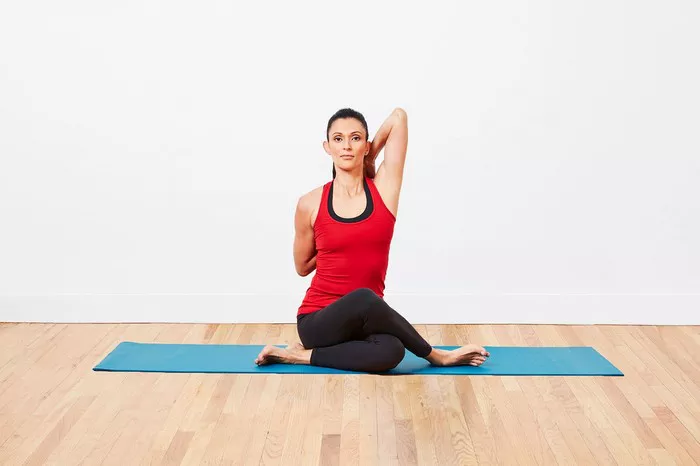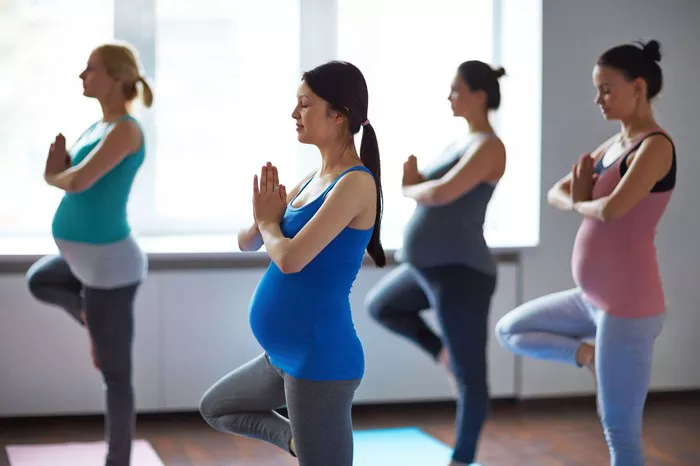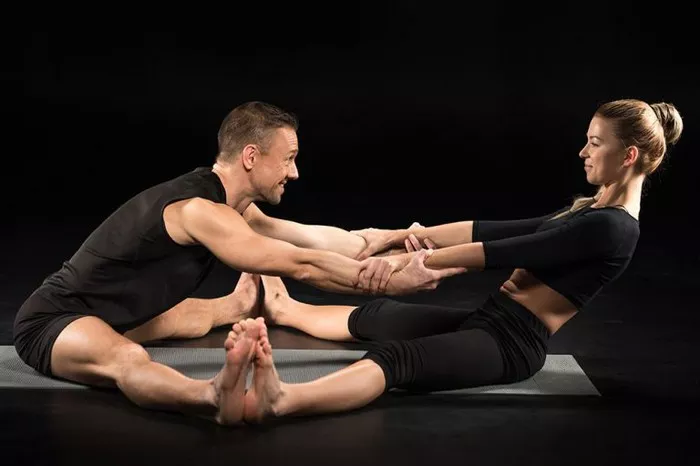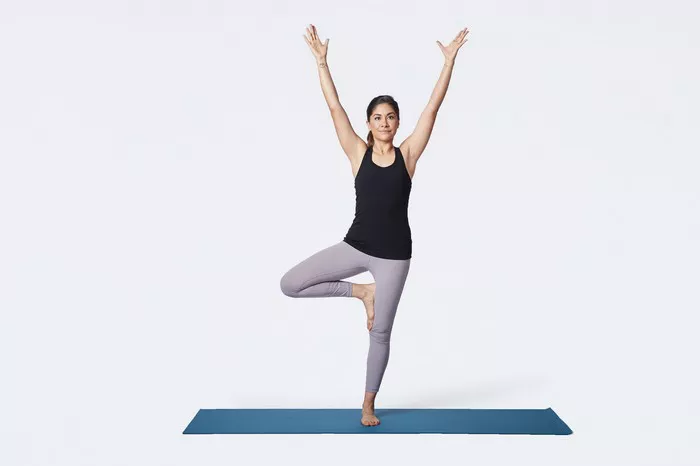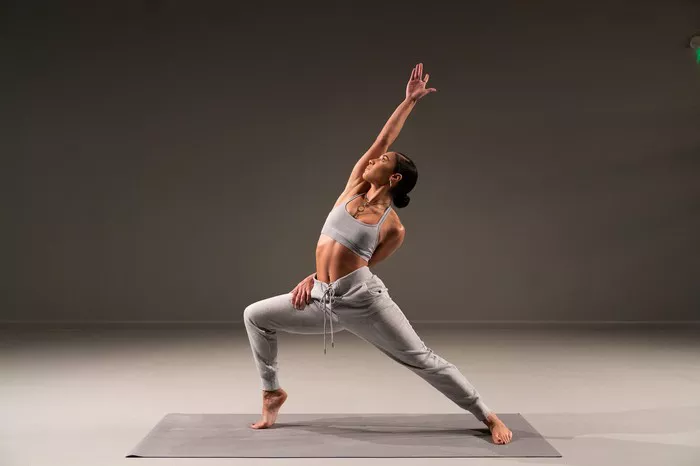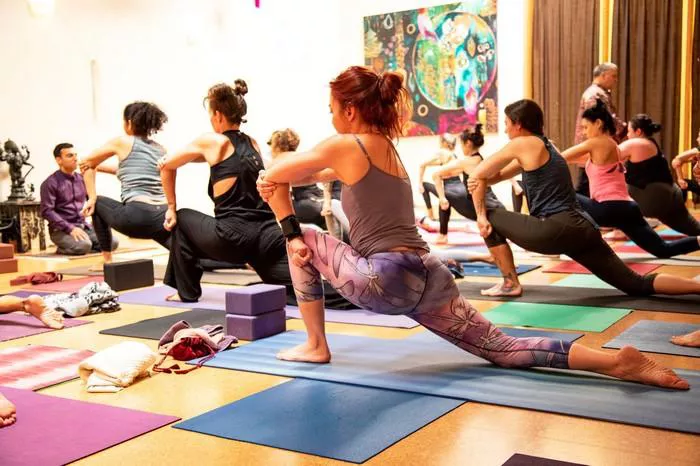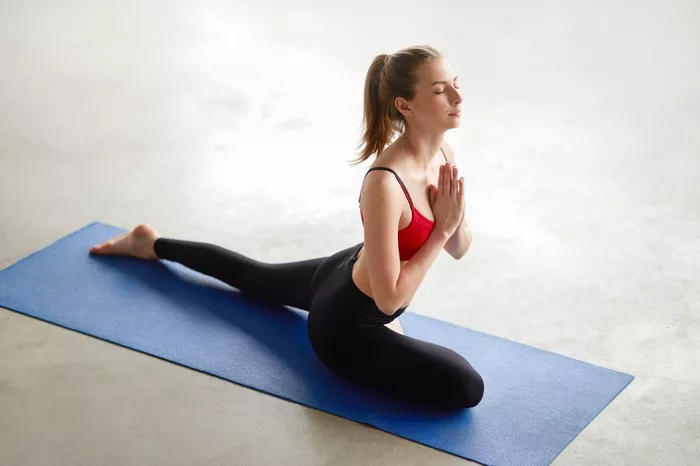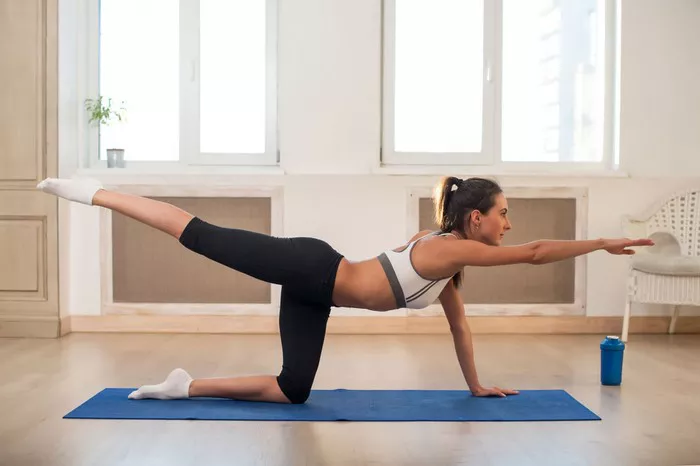Origins and Symbolism
Cow Face Pose, known as Gomukhasana in Sanskrit, is a classic seated yoga pose that has deep roots in the ancient traditions of India. The term “Gomukhasana” translates directly to “Cow Face Pose,” derived from “Go,” meaning cow, and “Mukha,” meaning face. This name may seem peculiar at first glance, but it reflects the pose’s symbolic nature and the visual resemblance of the body in this posture to a cow’s face. The crossed legs represent the cow’s lips, while the arms mimic the ears.
In Hindu culture, the cow is revered as a sacred animal, symbolizing fertility, nurturing, and the bountiful nature of the Earth. The pose’s name, therefore, imbues it with a sense of reverence and respect for life. Additionally, the practice of Gomukhasana is said to evoke the qualities of a cow – calmness, patience, and a grounded presence. This symbolic connection enhances the practitioner’s experience, making it not just a physical exercise but a meditative practice that fosters inner peace and tranquility.
Physical and Mental Benefits
Physical Benefits
Gomukhasana offers a plethora of physical benefits, making it a valuable addition to any yoga practice.
1. Improves Flexibility and Mobility: This pose targets the shoulders, hips, and thighs, helping to improve flexibility in these often tight areas. The deep stretch in the hips can alleviate tension and increase range of motion, which is particularly beneficial for those who sit for long periods.
2. Strengthens the Spine and Core: The upright posture required in Gomukhasana helps to strengthen the spine and the surrounding muscles. Maintaining this pose with proper alignment engages the core muscles, contributing to overall stability and posture.
3. Enhances Circulation: By opening up the chest and stretching the upper body, Gomukhasana can enhance blood circulation and oxygen flow throughout the body. This improved circulation helps in nourishing the muscles and joints, promoting faster recovery and healing.
4. Relieves Tension and Pain: Many practitioners find relief from chronic back, shoulder, and hip pain through regular practice of Gomukhasana. The deep stretches help to release muscle tension and reduce stiffness, providing long-term benefits for those suffering from pain related to poor posture or repetitive stress injuries.
Mental Benefits
Beyond its physical advantages, Gomukhasana also offers substantial mental benefits.
1. Reduces Stress and Anxiety: The focused, meditative nature of Gomukhasana helps to calm the mind and reduce stress. The pose encourages deep, mindful breathing, which activates the parasympathetic nervous system, promoting a state of relaxation and reducing anxiety levels.
2. Improves Concentration and Focus: Holding Gomukhasana requires concentration and balance, which can help improve mental focus and cognitive function. This heightened state of awareness can carry over into daily life, enhancing productivity and mindfulness.
3. Promotes Emotional Balance: The opening of the heart chakra associated with Gomukhasana can lead to a greater sense of emotional balance. Practitioners often report feelings of emotional release and a deeper connection to their inner selves, fostering a sense of peace and well-being.
4. Enhances Mind-Body Connection: Gomukhasana, like many yoga poses, emphasizes the connection between the mind and body. This holistic approach helps practitioners become more attuned to their physical and emotional states, leading to greater self-awareness and personal growth.
Variations and Modifications
Variations
Gomukhasana can be modified in various ways to suit different levels of flexibility and experience. Here are some common variations:
1. Half Gomukhasana: This variation involves performing the pose with one leg extended straight in front while the other leg is crossed over. This is ideal for beginners or those with tight hips, as it provides a similar stretch with less intensity.
2. Seated on a Block: Sitting on a yoga block can help elevate the hips and reduce strain on the knees, making it easier to achieve proper alignment. This modification is particularly useful for individuals with tight hips or limited flexibility.
3. Forward Fold: For a deeper stretch, practitioners can fold forward from the hips while in Gomukhasana. This variation intensifies the stretch in the hips and can also help to lengthen the spine and calm the mind.
4. Bound Hands Variation: In this variation, instead of clasping the hands behind the back, practitioners can use a yoga strap or towel to bridge the gap if their hands do not meet. This helps to gradually increase shoulder flexibility over time.
Modifications
For those with specific limitations or injuries, Gomukhasana can be modified to ensure a safe and effective practice.
1. Knee Support: Placing a folded blanket or cushion under the knees can provide additional support and comfort, especially for individuals with knee pain or sensitivity.
2. Shoulder Modification: If bringing the hands together behind the back is challenging, practitioners can hold opposite elbows or use a strap to reduce strain on the shoulders.
3. Hip Opener Alternatives: For those with tight hips, preparatory poses like Pigeon Pose (Eka Pada Rajakapotasana) or Happy Baby Pose (Ananda Balasana) can be practiced beforehand to help open up the hips.
4. Seated on a Chair: Practicing Gomukhasana while seated on a chair can be a suitable alternative for individuals with limited mobility or balance issues. This modification allows for the same upper body stretch while reducing strain on the lower body.
Step-by-Step Instructions
Getting into the Pose
1. Start in a Seated Position: Begin by sitting on the floor with your legs extended straight in front of you. You can sit on a folded blanket or yoga block if needed to elevate your hips.
2. Cross Your Legs: Bend your right knee and place your right foot under your left hip. Then, bend your left knee and stack your left leg over your right leg, so that your knees are aligned and your feet are positioned beside your hips.
3. Align Your Spine: Sit up tall, ensuring your spine is straight and your shoulders are relaxed. Engage your core muscles to support your posture.
Positioning the Arms
4. Right Arm Up: Raise your right arm overhead, then bend your elbow and reach your right hand down your back.
5. Left Arm Behind: Bring your left arm behind your back, bending the elbow and reaching up towards your right hand.
6. Clasp Hands: If possible, clasp your hands together behind your back. If your hands do not reach, use a yoga strap or towel to bridge the gap between them.
Holding the Pose
7. Breathe Deeply: Take slow, deep breaths, focusing on maintaining length in your spine and openness in your chest. Hold the pose for 30 seconds to 1 minute, or as long as is comfortable.
8. Release and Switch Sides: Gently release the pose by unclasping your hands and extending your legs. Repeat the pose on the opposite side, with your left leg on top and your right arm reaching down your back.
Exiting the Pose
9. Come Out Slowly: When you are ready to exit the pose, do so slowly and mindfully to avoid any sudden movements that could cause strain or injury.
10. Counterpose: Consider practicing a gentle counterpose, such as a seated forward bend (Paschimottanasana) or a gentle twist, to help balance the body and release any remaining tension.
Precautions and Contraindications
General Precautions
While Gomukhasana is generally safe for most practitioners, there are some important precautions to keep in mind to ensure a safe and beneficial practice.
1. Warm-Up: Always warm up your body before attempting Gomukhasana. Gentle stretches and preparatory poses can help to prepare your muscles and joints, reducing the risk of injury.
2. Listen to Your Body: Pay attention to your body’s signals and avoid pushing yourself too far. If you experience any sharp pain or discomfort, ease out of the pose and consult with a yoga instructor or healthcare professional.
3. Use Props: Utilize yoga props, such as blocks, straps, and blankets, to modify the pose and support your practice. Props can help you achieve proper alignment and prevent strain.
Contraindications
Certain conditions may require modifications or avoidance of Gomukhasana. Consult with a healthcare professional or experienced yoga instructor if you have any of the following conditions:
1. Knee Injuries: Individuals with knee injuries or conditions, such as arthritis, should avoid or modify Gomukhasana to prevent aggravating their condition. Using props or practicing a seated variation on a chair may be safer alternatives.
2. Shoulder Injuries: If you have a shoulder injury or limited shoulder mobility, avoid forcing the arms into position. Use a strap to reduce strain or skip the arm positioning if necessary.
3. Hip Issues: Those with hip replacements or severe hip conditions should approach Gomukhasana with caution. Gentle hip openers and modifications can provide a safer way to stretch the hips without causing injury.
4. Lower Back Pain: If you experience lower back pain, ensure that you are sitting with proper alignment and using props to support your posture. Avoid any forward folding variations that could exacerbate the condition.
5. Pregnancy: Pregnant practitioners should consult with a healthcare provider before attempting Gomukhasana. Modifications, such as practicing on a chair or using props, can help accommodate the changing body and reduce strain on the joints.
Conclusion
In conclusion, Cow Face Pose (Gomukhasana) is a multifaceted yoga posture that offers a wide range of physical and mental benefits. Its rich origins and symbolism add depth to the practice, while the variations and modifications make it accessible to practitioners of all levels. By following the step-by-step instructions and adhering to the precautions and contraindications, you can safely and effectively incorporate Gomukhasana into your yoga routine, reaping the rewards of improved flexibility, strength, and mental clarity.

